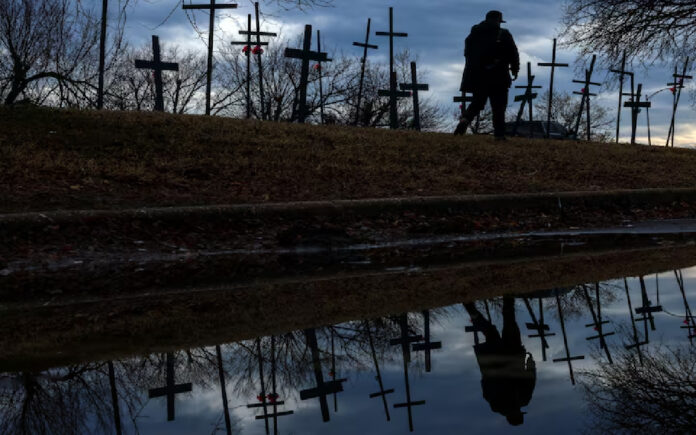Washington: As scrutiny intensifies over the role of air traffic controllers in the mid-air collision between a U.S. Army helicopter and an American Airlines regional jet, past settlements involving government liability in aviation accidents provide insight into potential legal ramifications.
Over the past decade, the federal government has settled 75 claims totaling $88.7 million in lawsuits alleging negligence by air traffic controllers, the military, and other government entities in aviation accidents. These settlement figures, recorded in the Treasury Department’s Judgment Fund, primarily involve smaller crashes—typically incidents resulting in one or two fatalities or serious injuries.
Legal Limits on Government Liability
Unlike private sector lawsuits, claims against the federal government are subject to restrictions under the Federal Tort Claims Act (FTCA), which only allows compensation for direct losses suffered by victims or their families. Punitive damages, which often result in significantly higher payouts in civil lawsuits, are not permitted.
It remains too early to determine liability in the Jan. 29 crash near Ronald Reagan Washington National Airport, which resulted in 67 fatalities. However, reports suggest that only one controller—rather than two—was managing local plane and helicopter traffic at the time. While this is considered “not normal”, it was deemed adequate given the reduced number of flights. Additionally, early assessments indicate the helicopter may have been flying above its assigned altitude.
If government agencies, such as the Federal Aviation Administration (FAA) or the U.S. Army, are found to have contributed to the crash, past settlements provide a framework for how litigation could proceed.
The Department of Justice (DOJ) and the FAA have not responded to requests for comment.
Precedents in Government Settlements
One of the most relevant cases involved a 2015 mid-air collision in South Carolina between an F-16 fighter jet and a Cessna aircraft. The government paid $6.8 million to settle a wrongful death lawsuit after air traffic controllers were found to have failed to prevent the collision.
“A mid-air collision is rarely the result of the failures of one party,” said Jim Brauchle, an attorney who represented the Cessna victims’ families. “The actions of each crew, along with the air traffic controller, have to be evaluated.”
An Air Force investigation found that controllers had directed the F-16 pilot to turn as the Cessna was ascending into its path, leaving both pilots unable to avoid the crash.
The largest single government payout—$20.8 million—was made to a family of French tourists in 2019 after a U.S. Navy Super Hornet jet crashed during a training exercise in Death Valley National Park. The aircraft slammed into Rainbow Canyon, just 40 feet from the family, and exploded, causing severe burns to the victims. The pilot was killed.
Disputes Over Liability in Past Cases
In many instances, the Judgment Fund payouts have stemmed from cases where private aircraft experienced mid-air mechanical failures or pilots were not warned about hazardous weather conditions. The government has often attempted to deflect blame by arguing pilot error was the primary cause of accidents.
For instance, in 2020, a Dallas-based attorney, Jon Kettles, won a $3 million settlement for the family of a Fort Worth couple whose Beechcraft aircraft crashed after losing engine power. The lawsuit claimed an FAA trainee mishandled air traffic instructions, giving erroneous directions that led the aircraft away from the nearest airfield.
Also Read | No Delays: Trump Enforces Tariffs on Canada, Mexico, and China
Before the settlement, DOJ lawyers argued that the crash was caused by pilot error, not air traffic control. They also contended that allegations of training failures, supervision, and understaffing should be dismissed as they involved “a discretionary function or duty” of a federal agency or employee.
Similar defenses could arise in lawsuits related to the Washington collision, particularly if allegations emerge regarding staffing shortages at Reagan National Airport or concerns over the helicopter’s flight training protocols.
Also Read | Medevac Plane Crashes in Philadelphia with Six on Board, Including Child
Kettles believes the Washington crash will likely be attributed to multiple factors but emphasized the critical role of air traffic controllers in preventing disasters.
“The controller is the safety net in the system,” he said.



